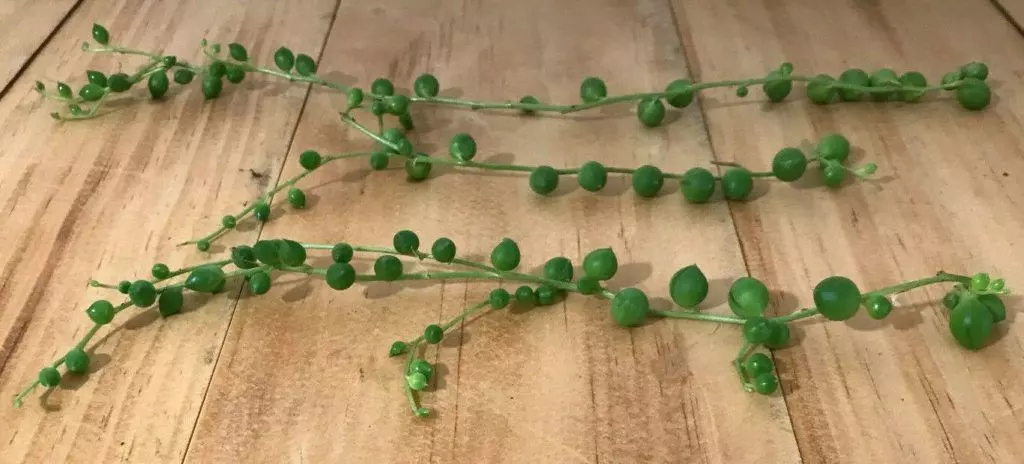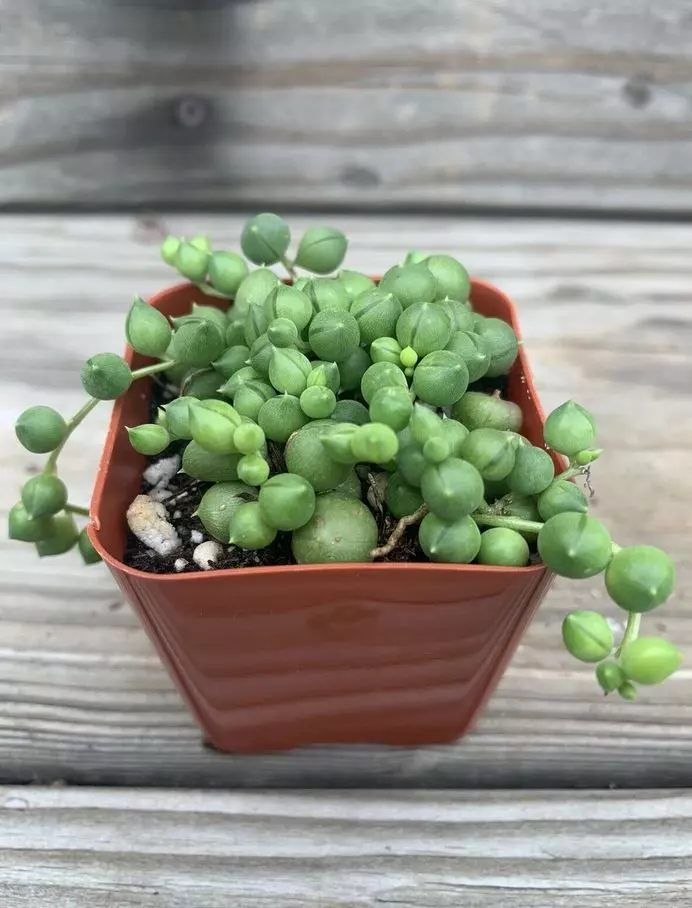String of pearls (Senecio rowleyanus) is very easy to propagate and you can take advantage of any of its long “collars” to do so. Learn all about Propagating String of Pearls in this article.
Table of Contents
Propagating String of Pearls – Step by Step
To propagate string of pearls we need well-sharpened and disinfected scissors. You must never forget to disinfect your propagation tools.
1- Cut about 2“ (5 cm) from any stem and remove two or three pearls from each stem.
2- Bury the part of the stem without beads in the substrate and then water.
3- You can also place the stem on the soil, trying to bury the pellets slightly. Roots will appear from them.
4- Place the pot in a bright place and wait for the soil to dry out before watering again.
5- After a couple of weeks you will notice that the stem continues to grow and even fork.
6- Bury the part of the stem where the little pearls were so that it can form roots.

Substrate and Repotting for Senecio rowleyanus
As with any succulent plant, it is preferable to use a well-draining substrate to avoid waterlogging the roots. Use clay pellets or volcanic stones to form a layer at the base of the pot, and then add cactus substrate until it is full. Another option is to use a universal substrate mixed with a good amount of perlite or sand to facilitate drainage.
The material of the pot is also important: if you use a terracotta pot, you will compensate for any excess watering since the clay itself, being porous, will absorb part of the humidity.
How to Water String of Pearls
String of pearls is easy to grow if it is not over-watered. The rule is to let the substrate dry out completely between waterings, which is usually once a week in summer and every two or three in winter. But in this case, we have an added advantage, and that is that the pearls “show” that they need water because they lose their smooth appearance and wrinkle slightly when they are thirsty.

